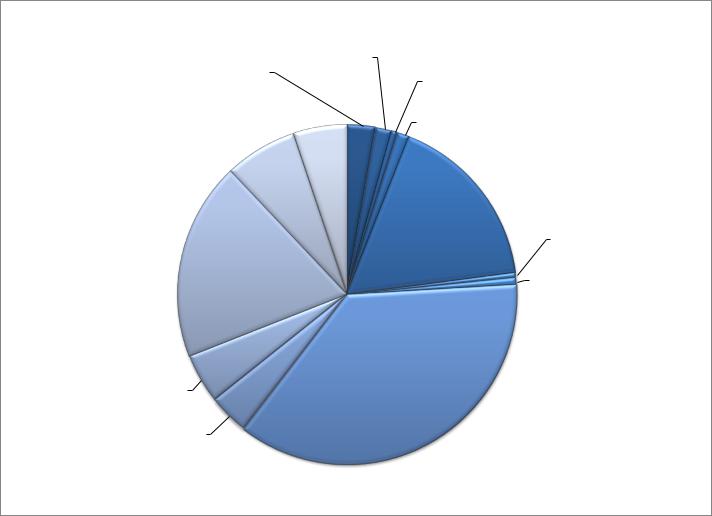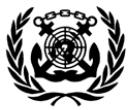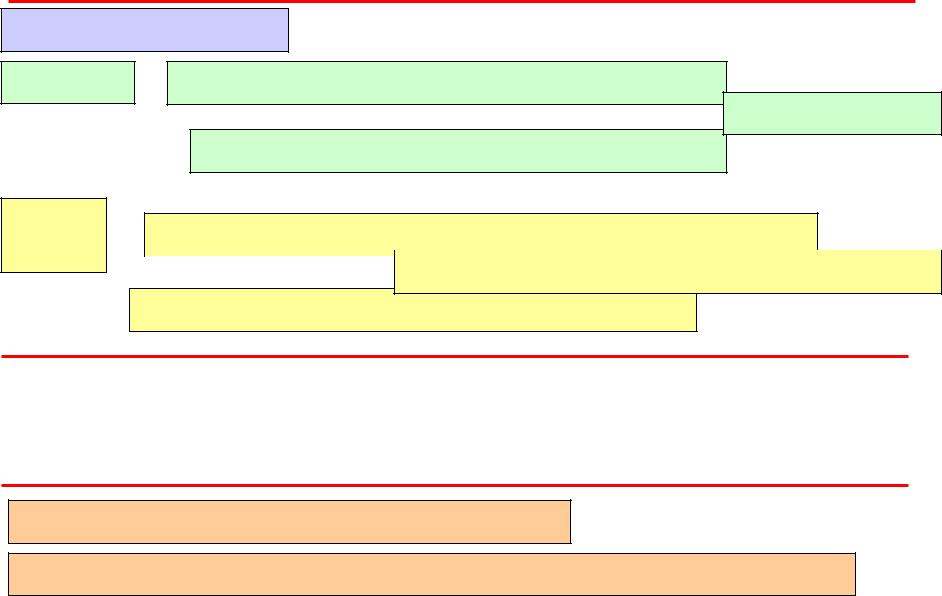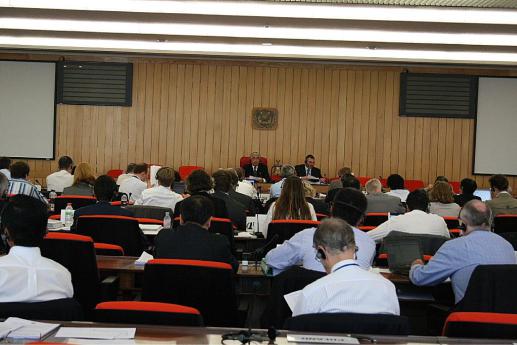
Правила Кодексы / МАРПОЛ / EEDI_2011
.pdfEnergy Efficiency Design Index (EEDI)
MARPOL ANNEX IV and
Marine Environment protection
Koichi Yoshida

How ships contribute to global warming?
IMO GHG Study (NMRI is one of the member) reported GHG emission from international
shipping in 2007 is estimated about 870
Million tones
About 2.7% of global emission of CO2.
Fuel Consumption (Million tons)
450 |
|
|
|
|
|
|
|
This study |
|
|
|
|
|
400 |
IMO Expert Group (Freight-Trend), 2007 |
|
|
|
|
|
|
|
|
|
|
||
350 |
Endresen et al., JGR, 2007 |
|
|
|
|
|
|
|
|
|
|
|
|
|
Endresen et al (Freight-Trend)., JGR, 2007 |
|
|
|
|
|
300 |
EIA Total marine fuel sales |
|
|
|
|
|
|
Point Estimates from the Studies |
|
|
|
|
|
250 |
This study (Freight trend) |
|
|
|
|
|
|
|
|
|
|
||
200 |
|
|
|
|
|
|
150 |
|
|
|
|
|
|
100 |
|
|
|
|
|
|
50 |
|
|
|
|
|
|
0 |
|
|
|
|
|
|
1950 |
1960 |
1970 |
1980 |
1990 |
2000 |
2010 |

CO2 emissions from shipping compared with global total emissions (IMO GHG Report)
International International
Marine |
Aviation, 1.5% |
Domestic Shipping |
|
Bunkers, 2.7% |
|||
|
and Fishing, 0.6% |
||
|
|
||
|
|
Domestic Aviation, |
|
Residential , 6.9% |
Other, |
1.1% |
|
|
|
||
|
5.1% |
|
Road, 17.0% |
Rail, 0.5% |
Manufacturing |
|
Industries and |
Other Transport, |
Construction, |
0.7% |
18.9% |
|
Electricity and Heat |
|
Production, 36.4% |
|
Other Energy |
|
Industries, 4.7% |
|
Unallocated |
|
Autoproducers , |
|
3.8% |
|
3

What is going on internationally
UNFCCC (May 9 1992)
•United Nations (UN) adopted United Nations Framework Convention on Climate Change (UNFCCC) on 9 May 1992, aiming at stabilizing Green house Gas (GHG) in atmosphere and preventing harmful impact of human behaviors of excessive emission of such gas.
•UNFCCC specifies “common but differentiated responsibilities” to members listed in ANNEX I (so called “developed countries”). and members not listed in ANNEX I (so called “developing countries”).
Kyoto protocol to UNFCCC (December 1997)
The article 2.2 paragraph 2 of Kyoto protocol specifies:
“The Parties included in Annex I shall pursue limitation or reduction of emission of greenhouse gases from aviation and maritime bunker fuels, working through the International Civil Aviation organization and the International Maritime organization, respectively.”

What IMO did:
IMO Assembly Resolution A.963(23), 2003
1.URGES the Marine Environment Protection Committee to identify and develop the mechanism or mechanisms needed to achieve the limitation or reduction of GHG
emissions from international shipping and, in doing so, to give priority to: (a) the establishment of a GHG emission baseline;
(b) the development of a methodology to describe the GHG efficiency of a ship in terms of a GHG emission index for that ship.
(c) the development of Guidelines by which the GHG emission indexing scheme may be applied in practice. The Guidelines are to address such issues as verification;
(d) the evaluation of technical, operational and market-based solutions; 2. REQUESTS the Marine Environment Protection Committee:
(a)to consider methodological aspects related to the reporting of GHG emissions from ships engaged in international transport;
(b)to develop a Work Plan with a timetable;
(c)to keep this matter under review and to prepare consolidated statements on the continuing IMO policies and practices related to the limitation or reduction of GHG
emissions from international shipping;
3. REQUESTS the Secretariat of the Organization to continue co-operating with the Secretariat of UNFCCC and the Secretariat of the Intergovernmental Civil Aviation Organization.

Framework of CO2 emission reduction measures from ships being considered in IMO MEPC
Technical measures
New ships |
Energy Efficiency Design Index (EEDI) |
EEDI baselines
Mandatory reduction of attained EEDI
Existing
Ship Energy Efficiency management Plan (SEEMP)
ships  Best practice for CO2 emission reduction
Best practice for CO2 emission reduction
Energy Efficiency Operational Indicator
|
|
|
|
CO2 emission Cap |
|
Market based |
|
GHG emission fund |
|
|
|
|
|
|
|
||
approach |
|
(charge per fuel) |
|
|
|
CO2 emission trade |
|
||||
|
|
|
|
|
|
|
|
|
|
|
|
|
|
|
|
|
|
No More Favorable Treatment: NMFT (IMO)
Common But Differentiated Responsibility: CBDR (UNFCCC)

Framework for reduction of CO2 emission from International Shipping; Technical and market based approach and EEDI Energy Efficiency Design Index for new ships
New ships of 400GT and over will be required to calculate EEDI.
New ships of certain size and over will be required to have its attained EEDI to be equal or less than a required EEDI.
Principle of EEDI
•EEDI: indication of energy efficiency by CO2 emission (g) per cargo carry (ton mile)
•Method of calculation is well established and defined and can be used by everybody.
•The technology is well established.
•Process and results of the calculation is verifiable and transparent.
Work done and in process
-IMO MEPC has developed the method ff calculation and verification of EEDI.
-IMO MEPC 62 (July 2011) adopted a set of regulations to be included into MARPOL ANNEX VI to make EEDI mandatory for new ships.
IMO MEPC adopted on 18 July 2011 Resolution MEPC.203(62)
Amendments to the ANNEX of the Protocol of 1997 to amend the International Convention for the Prevention of Pollution from Ships,
(inclusion of regulations on energy efficiency for ships in MARPOL Annex VI)
The amendment will enter into force on 1 January 2013 to ships
1.For which the building contract is placed on or after 1 January 2013; or
2.In the absence of a building contact, the keel of which is laid or which is at a similar stage of construction on or after 1 July 2013; or
3.The delivery of which is on or after 1 July 2015
Technical requirements are placed in MARPOL ANNEX VI new chapter 4
Regulation 19 Application
•Apply to all ships of 400 gross tonnage and above;
•Not apply to ships solely engaged in voyages within the water of the flag state;
•Not apply to ships having diesel-electric propulsion, turbine propulsion or hybrid propulsion systems;
•Administration may waive the requirement from complying with regulation 20 and 21, but this waiver shall not apply to ships
–For which the building contract is placed on or after 1 January 2017; or
–In the absence of a building contract, the keel of which is laid or which is at a similar stage of construction on or after 1 July 2017: or
–The delivery of which is no or after 1 July 2019; or
–Major conversion on or after 1 January 2017.
Attained EEDI
Attained EEDI shall be calculated for new ships and ship has undergone a major conversion
Which fall into one or more of the categories in regulation 2.25 to 2.35
•2.25 Bulk carrier (exclude combination carrier)
•2.26 Gas carrier
•2.27 Tanker (both oil tanker and chemical tanker)
•2.28 Container ship
•2.29 General cargo ship (except livestock carrier, barge carrier, heavy load carrier, yacht carrier nuclear fuel carrier)
•2.30 Refrigerated cargo ship
•2.31 Combination carrier
•2.32 Passenger ship
•2.33 Ro-ro cargo ships (vehicle carrier)
•2.34 Ro-ro cargo ship
•2.35 Ro-ro passenger ship
